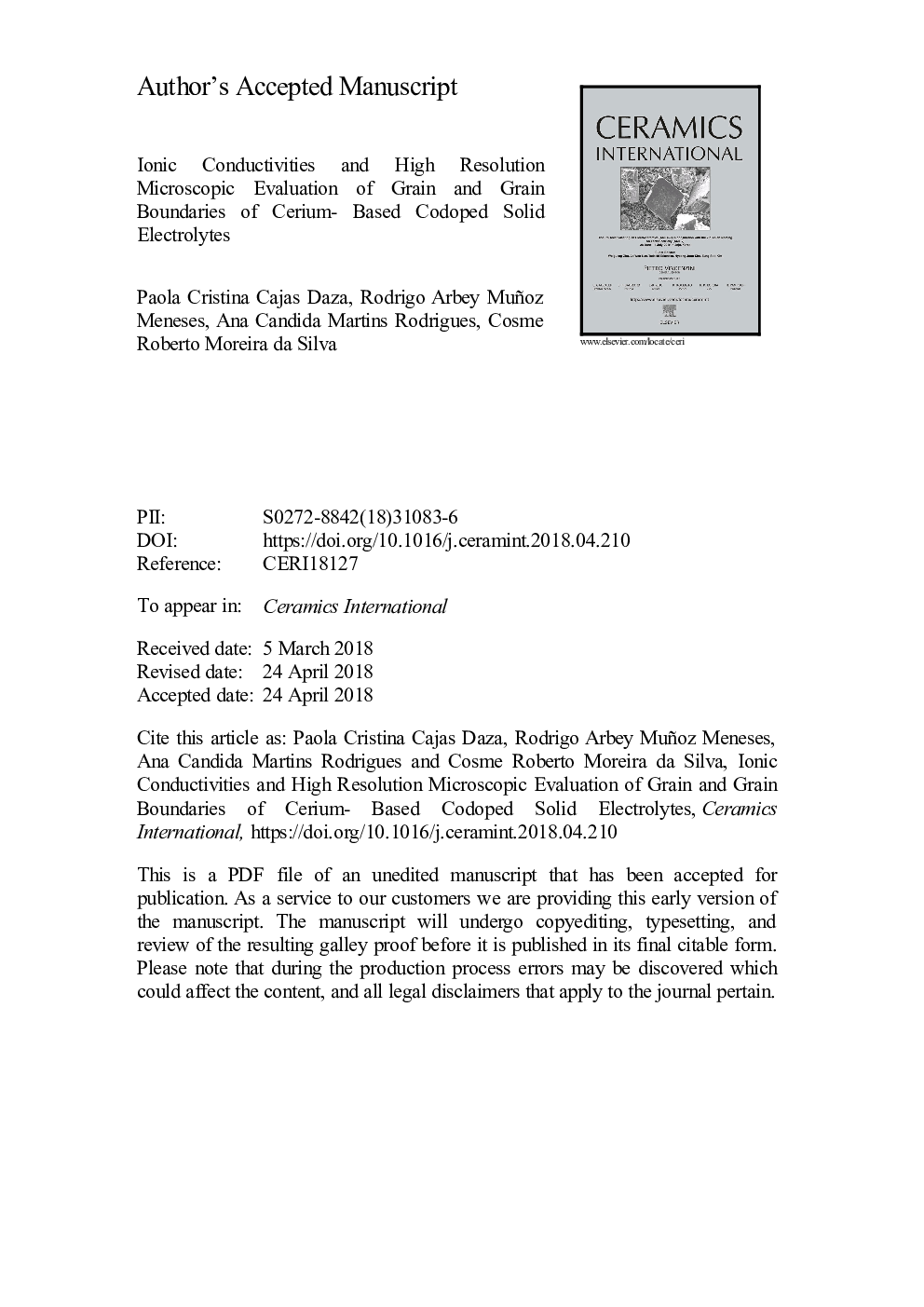| Article ID | Journal | Published Year | Pages | File Type |
|---|---|---|---|---|
| 7886402 | Ceramics International | 2018 | 36 Pages |
Abstract
Doped CeGdO and codoped CeGdOSmO compositions were synthesized, giving rise to nanoparticulate powders. Ionic conductivities at bulk and grain boundaries of the sintered samples were determined, exhibiting increased conductivity in the samaria-codoped samples. Scanning electron microscopy (SEM) showed a significant reduction in the grain size of samaria-codoped electrolytes. This reduced grain size of the codoped samples caused a reduction in Schottky barrier height, increasing oxygen vacancy concentration in the space-charge layer of the grain boundary and culminating in greater ionic conductivity in the boundary region. For the gadolinium doped samples, high resolution transmission electron microscopy images at grains showed the presence of large cluster of defects (nanodomains), hindering the movement of charge carriers and reducing ionic conductivity. However, the samaria-codoped system displayed better homogeneity at atomic level, resulting in reduced oxygen vacancy ordering and, consequently, smaller nanodomains and higher bulk (grain) conductivity. The reduced grain sizes and smaller nanodomains caused by codoping favor the ionic conductivity of ceria-based ceramics, doped with gadolinia and codoped with samaria.
Keywords
Related Topics
Physical Sciences and Engineering
Materials Science
Ceramics and Composites
Authors
Paola Cristina Cajas Daza, Rodrigo Arbey Muñoz Meneses, Ana Candida Martins Rodrigues, Cosme Roberto Moreira da Silva,
